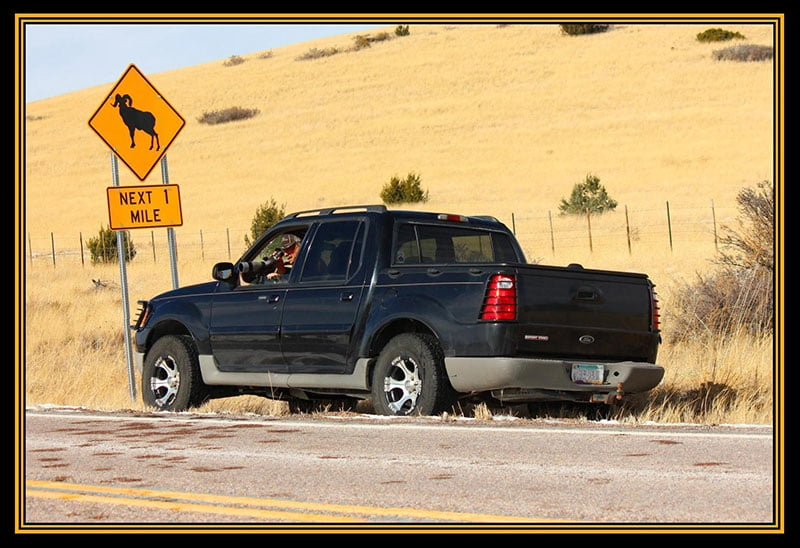
Last Updated on
By Tony Martins
I’m often asked about my wildlife photography, particularly how to get close enough to wild animals to take decent quality photo images. While good stalking skills out in the field are an important asset in this pursuit, truth be told, many of my best wildlife photos are taken from the somewhat concealed comfort of my truck. To many animals – particularly those that spend time near roadways – a vehicle is non-threatening. Thus, approaching animals in a vehicle will often not trigger the flight response, while providing the cover necessary for the wildlife watcher/photographer to get close.
It’s been my good fortune to live in Arizona’s game rich White Mountains for the past 25 years. Known for producing trophy quality elk, the area also holds populations of mule deer, Coues whitetail deer, pronghorn, Rocky Mountain bighorn sheep, black bear, mountain lion, Mexican gray wolves, Merriam’s turkey and javelina. I cover 400 to 500 miles each week driving from home to shop to home, and typically encounter one or more of these species everyday. Thus, opportunities are readily available when I pay attention, and can take the time to stop for a photo session. And like most endeavors, the key to success is being prepared for those opportunities when they occur.

My work as an outdoors photojournalist for more than 20 years has conditioned me to never leave home without a camera… or two. When traveling alone, my sidekick riding shotgun is a plastic tote containing all the gear I may need to view, photograph and video roadside wildlife. Here’s a list of what I carry:
- DSLR camera with 55-250mm zoom lens featuring image stabilization
- Auxiliary digital slave flash
- Compact point-and-shoot digital camera
- Compact video camera
- Spotting scope
- Window mount
- Smartphone
- PhoneSkope adapter
- Binocular in 10x42mm
- Replacement batteries
- Tripod
- Backpack
- Camouflage jacket & cap
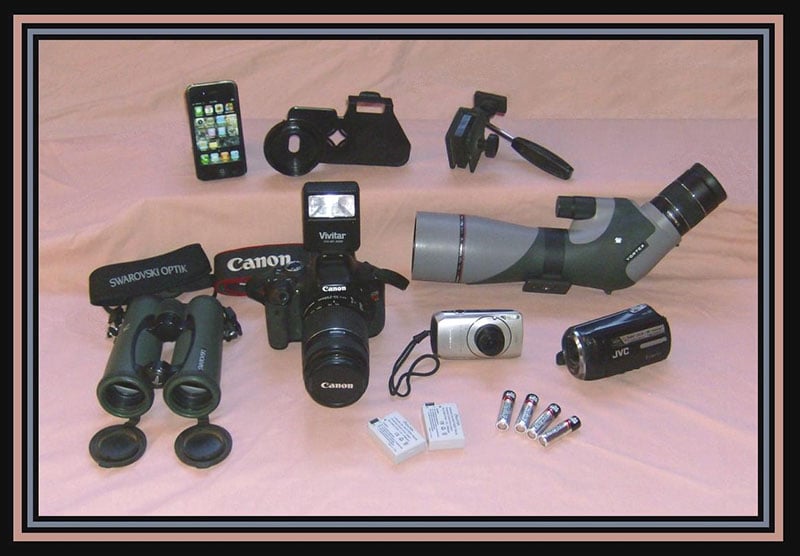
Your primary camera should be positioned in the vehicle where it is available for quick access. Wild animals that ignore moving vehicles will often run away when the vehicle stops, so it pays to be ready. Most DSLR cameras have an automatic setting designed for shooting subjects in motion, and I keep mine on this setting to be ready for animals that bolt. If the subject animal remains calm when the vehicle rolls to a stop, you will have more time to adjust the camera to the optimal settings for the conditions present. The nice moving image of the collared Mexican Gray wolf in the composite below (right) was captured only because I rolled up to the animal with window down and camera ready to shoot, after spotting him crossing the paved highway several hundred yards ahead.
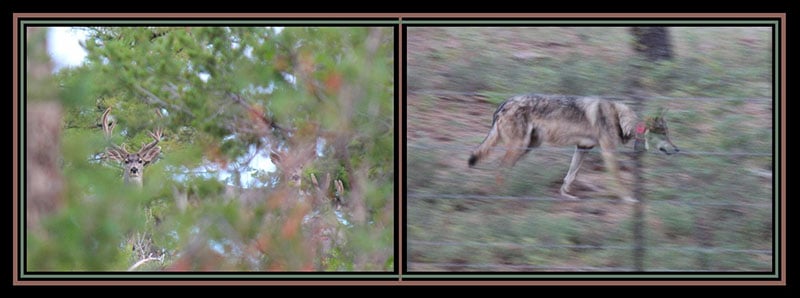
You may have noticed that I carry a tripod and backpack with me when traveling. On occasion after spotting wildlife from the roadside, I will load up my gear and pursue on foot. This can be productive for individual animals or small groups, if they move off when the vehicle approaches but appear to remain calm and not spooky. Due to high demand for good quality photos of some animals, I will often stalk after mule deer bucks and black bear, as well as wolves and coyotes when encountered – although I typically add a rifle and shooting sticks to my gear selection when chasing after a coyote. The peek-a-boo photo of the mule deer bucks in the composite above (left) was the result of stalking for nearly an hour after leaving the roadside, but it was well worth the effort.

For the past three years, digiscoping devices like the PhoneSkope have been all the rage in the world of wildlife viewing, and the variety of devices available for attachment to spotting scopes and binoculars for close-up wildlife viewing and photography is growing exponentially. Some of these devices are excellent quality and easy to use (as well as expensive), and some not-so-much. They have evolved due to demand, as many of us have been hand-holding small digital cameras and cell phones against the ocular lenses of our high-powered optics to capture images for many years. Without question these devices produce superior photos, and clear sharp images are necessary for commercial applications – like illustrating magazine articles. Nevertheless with a little practice and a steady hand, good quality images suitable for personal enjoyment as well as impressing social media friends can be captured via the low-tech handholding method, with window mounted scope or binocular.
Although vehicle positioning is very important in capturing good quality photographic images and video, safety is the first priority in this pursuit. Rubbernecking while driving in an attempt to spot wildlife is a dangerous practice that should be avoided. When traveling alone through areas where wildlife may be present, it’s best to find a safe spot to pull completely off the roadway, and then glass the surrounding area with a binocular. Turnouts and small roads that intersect the main travel route are ideal parking/spotting locations. Larger roadways and major highways usually have right-of-way areas that are wide enough for a vehicle to park safely off the roadway. It’s wise to review traffic laws in advance of travel however, as parking in a right-of-way, even temporarily, may be illegal. If an animal of interest is spotted at distance, you can also use the binocular to find a safe parking location that may be closer to the animal before moving the vehicle. And, be sure to exercise caution when moving back onto the roadway – particularly when merging into traffic – after an off-road stop.
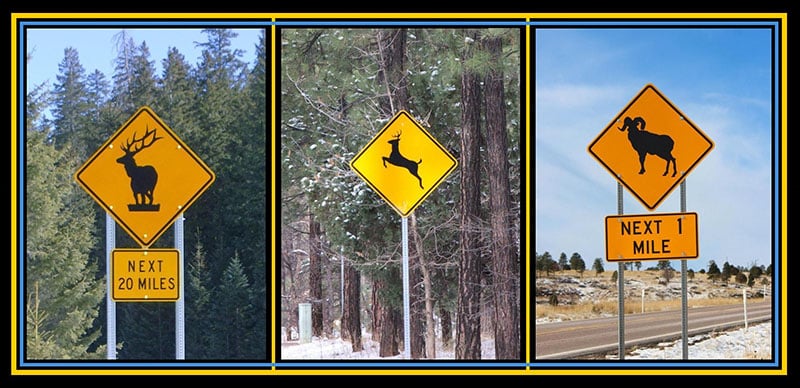
When viewing and attempting to photograph or video wildlife that is downhill from your position seated in a vehicle, the best vantage will often be from the same side of the road as the animal(s). Likewise, when wildlife is located uphill, the opposite side of the roadway will offer a better angle and usually a better view as well. Positioning the vehicle with the driver’s window toward the subject animal so a window mounted scope can be used will often require a u-turn to the opposite side of the roadway. Sometimes executing this maneuver means the vehicle will be facing into oncoming traffic, and this should be done only where it is safe, and legal to do so. For example, this should never be attempted on a highway where 2 or more lanes of oncoming traffic must be crossed, or on any roadway where the roadside margin available for parking is narrow. Besides the inherent danger of parking close to moving traffic, this can also give the appearance of a wrong-way driver to oncoming vehicles.
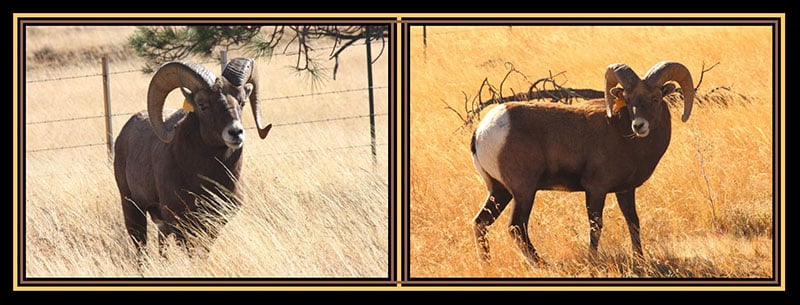
If video and/or photography are your primary interests, location of the sun is an important consideration when positioning the vehicle. The best images are usually obtained with the sun at your back. If the only option is backlighting however, interesting images can still be produced when the subject is comparatively close. Using a flash can eliminate unwanted shadows when facing toward the sun, but this will often spook animals that are close enough for the flash to actually have an effect on the image produced – so just as in hunting, it’s important to make your first shot count!
When spotting wildlife in hilly or mountainous terrain, I often park the vehicle and climb to a higher vantage point with tripod and scope or camera. If the animals are close, I remain still in the vehicle while assessing their level of comfort with my intrusion. If they remain calm or ignore my presence, I prepare my equipment inside the vehicle – for example, by attaching the scope or video camera to the tripod – so departing for higher ground will cause as little commotion as possible.
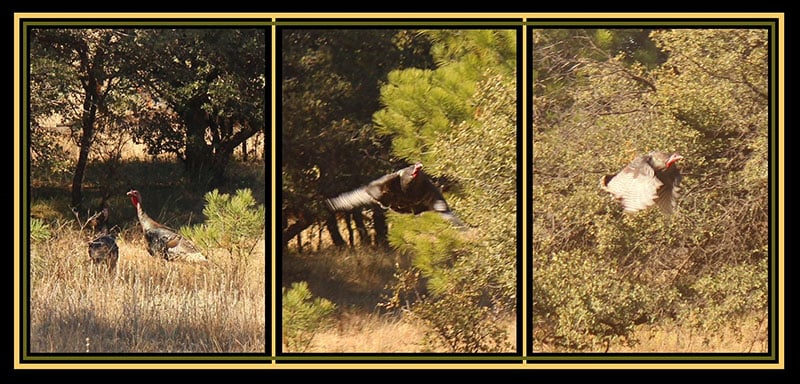
Of course, when traveling in the backcountry, particularly on isolated dirt roads where other vehicles are seldom encountered, it’s usually OK to stop in the middle of the road and stick your camera out the window when a good wildlife viewing/photographing/videoing opportunity presents. That’s how I captured the Merriam’s wild turkey sequence above, which highlights the importance of being ready for the opportunity, whether on- or off-road. Have fun, be prepared and be safe. And, if you happen to get a good photo of Bigfoot, please send me a copy!




Leave a Reply